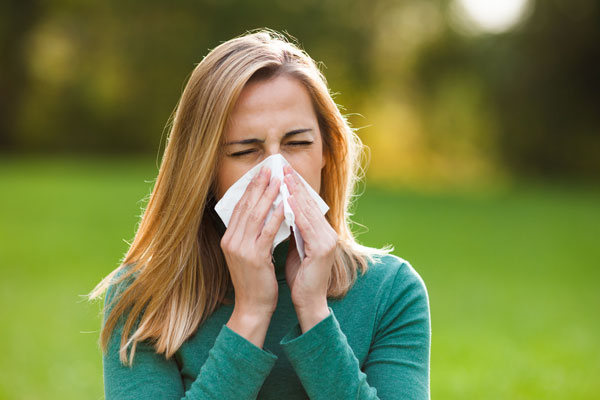- La Feria Community Holds Succesful Business Mixer Event
- Little Nashville to Take Place in Downtown Mercedes
- Lions Basketball Captures District Gold
- La Feria ISD Students Compete in Regional Chess Tournament
- Lions End First Half of 32-4A on a High Note
- La Feria ISD Held Another Successful Parent Conference
- Strong Appearance for Lions at Hidalgo Power Meet
- LFECHS Students Get to Meet Local Actress
- Students Participate in Marine Biology Camp
- Two LFECHS Students Qualify for All-State Band
Get the Scoop on Spring Allergies
- Updated: April 29, 2016
(StatePoint) Spring allergy season seems to get worse each year, and climate change may be the culprit, according to the American Academy of Allergy, Asthma & Immunology. Increasing temperatures and carbon dioxide levels in the atmosphere help plants grow faster — and produce more pollen. For many people, this can trigger allergy symptoms.
“Spring allergy symptoms can lead to a major disruption in quality of life,” says allergist and immunologist Dr. Neeta Ogden. “It’s important for allergy sufferers to manage these symptoms, so they can feel their best and enjoy the season.”
Dr. Ogden is providing some information and tips to help make spring more bearable for allergy sufferers.
• Seasonal Allergies Can Strike at Any Age: Some people develop seasonal allergies as adults. If you think you don’t have seasonal allergies, but find yourself sniffling and sneezing this spring, it might be time to see an allergist.
• Pets are Pollen Carriers: Pets tend to track allergens like pollen and mold into the house. If you have pets, try to wash or wipe them down when they come indoors.
• Indoor Allergies Stay in Play: Indoor allergies are still an issue in spring. For example, some people kick up dust and other allergen particles while spring cleaning. Make sure you know your allergy triggers, so you can take steps to manage them.
• Create an Everyday Spring Allergy Plan: Make tweaks to your daily routine to avoid what sparks your symptoms. For example, check the pollen forecast in the morning, change clothes when you get home, and wash your face before bed to remove lingering pollen particles from your face.
• Be Wise at Home: Take steps to avoid allergens at home. For example, keeping your windows shut from early morning to late afternoon and changing the filter in your AC unit can make a difference.
• Schedule Tee Times Strategically: Avoid being outdoors when pollen counts peak in the early morning and early evening. For example, if you enjoy outdoor activities like golf and running, try to do them later in the morning.
• Don’t Suffer on Spring Break: Many popular spring travel destinations are allergy hot spots. Don’t get caught off guard when you get off the plane. When picking a destination, check the pollen count first. And wherever you go, remember to pack a hat, sunglasses, and your allergy medication.
• Don’t Procrastinate: It’s a good idea to start taking allergy medication at the very first signs of your symptoms.
“I often recommend treatment options that are available over-the-counter at full prescription strength,” says Dr. Ogden.
For example, Nasacort Allergy 24HR is a scent- and alcohol-free nasal spray that is available over-the-counter at full prescription strength to help relieve allergy symptoms like sneezing, itchy runny nose and congestion. It blocks more of the chemical responses that can cause nasal allergy symptoms than antihistamines. More information about the science behind nasal allergies can be found at Nasacort.com.
This spring, feel your best. Take proactive steps to manage your nasal allergy symptoms so you can enjoy the season.



